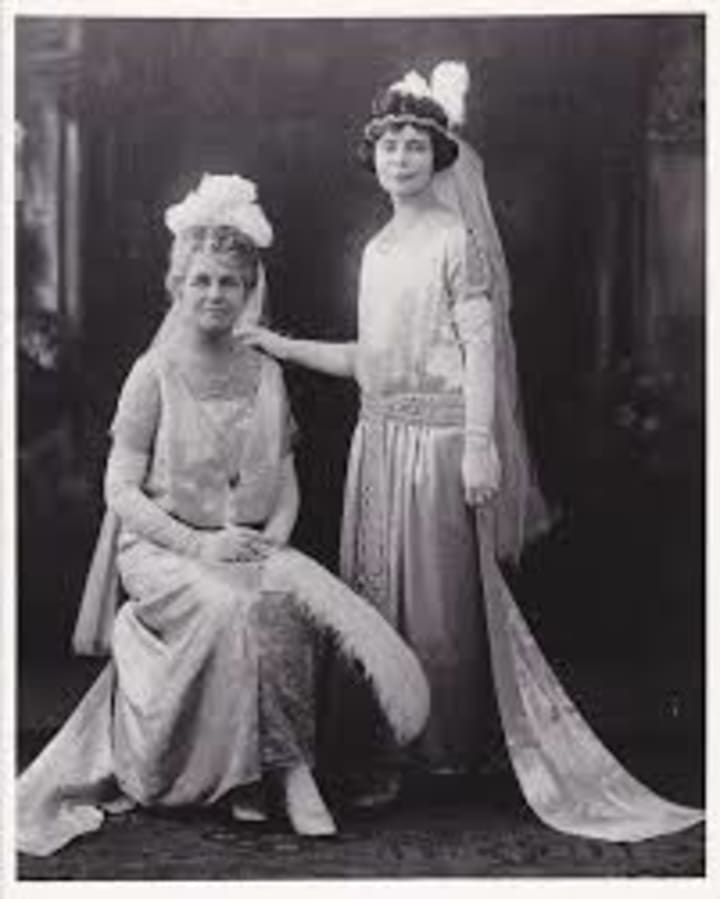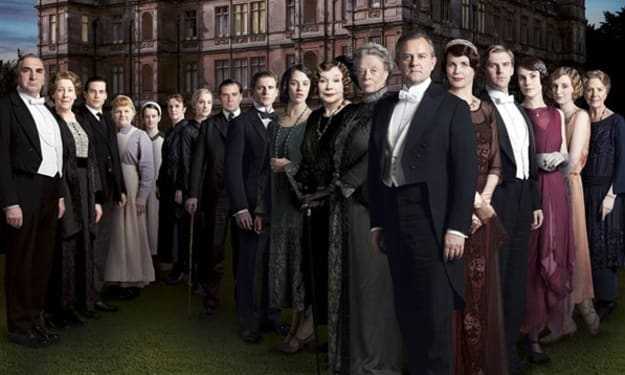"Coming Out"
In Victorian and Edwardian England

When a young lady “came out” in the Victorian and Edwardian Eras, it meant something quite different to how the generation understands those words today. For a young lady, who was born into a wealthy family, it was one of the most important events in her life. It represented her change in ‘status’ from a child to an adult and it ‘introduced’ her to society. This occurred (usually) between her 15 and 18th birthday and ‘showed’ that the young lady was ready to marry. Before this, she was always in the school room, rarely going out to parties.
If the family was related to the Royal Family, the daughter would have been “Presented at Court” which was the beginning of her “Coming Out”, and it took weeks of preparation. The choice of a style of gown meant numerous fittings and selection of the right accessories (slippers, fan, feathers, jewellery, etc). She had to learn to walk gracefully “in the presence of the Queen”. The young lady had to learn how to walk with a train attached to her dress and, most importantly, how to do a full Court curtsey.

The rules of dress for the Presentation were quite rigid. The dress had to have a train and a tulle headdress with a veil that was long enough to float over the train. The unmarried young lady was allowed to wear white or soft colours, and some of the gowns were designed to be adapted for their wedding dresses. The Presentation dress was quite often short-sleeved with a low-cut neckline. The headdress had to include a veil and feathers, how many and the size of the feathers depended on the Queen of the time. The young lady had to have a sponsor to present her, who was usually her mother or an older female member of the family, and who would have already been Presented at Court.
The “Presentation” began around 2pm to 3pm, but the young ladies were there long before, waiting outside in their carriages. When allowed in, they were led to the Gallery and waited for their name to be called. They were often ‘lined up’ according to their rank or title. Once the young lady was before the Queen, she would do a full Court curtsey and then back out, still facing the Queen, being careful not to trip over her train (something the young lady would have practised for weeks beforehand).
Now the young lady was considered a young woman, invited to all of the balls and ‘ready’ for marriage. This was only done for the wealthy young ladies, it did not apply to servants or the lower classes. Again, an example of the great “Class divide”.
The “Coming Out” ceremony often coincided with the start of the London Season, which was just after Easter, and 100 to 200 young ladies were presented over three days. An accomplished young lady was expected to speak several languages, play piano and sing, paint watercolours, do needlepoint, and learn classical history and geography, as well as ‘knowing’ from memory the Monarchy, peerage and gentry. When married, she would become the perfect hostess, elegant and beautiful, and having as many children as possible.
After the “Presentation”, any one of various forms of entertainment may be given to present a young lady to society. The most elaborate yet favorite of these was a ball, but only if the parents (or guardians) were wealthy.

During Queen Victoria’s reign, there were three qualifications a young lady had to pass inorder to be “Presented”. 1) The young lady had to be of good moral and social character. 2) The “Presentation” had to be made by someone who had themselves been presented. 3) Who was the young lady? What was her status or rank? Invitations went out three weeks before the “Presentation” date, which gave the young lady plenty of time to practice her Court curtsey. A full Court dress (during Queen Victoria’s reign) was a low bodice, short sleeves, and a train not less than three yards in length from the shoulders. The width at the end was 55 inches. The dress had to be white for the unmarried young lady, which could be trimmed with flowers. Only white gloves were allowed (unless someone was in mourning, then black or grey was worn). Both unmarried and married ladies were required to wear plumes, the married wore three white feathers, the unmarried wore two white feathers. Coloured feathers were not allowed, even if someone was in mourning. Veils or lappets had to be white and no longer than 45 inches. Bouquets were optional, as were fans.
Downton Abbey is one of the few programmes which actually ‘show’ this unique “Coming Out” experience. In series 4, episode 9, Rose “Comes Out”, being presented at Buckingham Palace, and then having her own “Ball”, all of this being arranged by Lord and Lady Grantham. The setting is the Summer of 1923, and the whole of the Crawley family, including (cousin) Rose and the servants, move to the London Town House for the London Season. The story is interwoven with lots of little ‘sub-stories’, but the main theme is “Rose’s Coming Out”.

Rose is presented to King George V and Mary of Teck, with Lady Grantham ‘introducing’ her. The dresses are beautiful and very authentic to the time and occasion. Rose’s “Presentation” dress was white, with a veil which measured 45 inches and 3 ostrich feathers attached. The dress also had a train, with Rose wearing gloves and holding a small bouquet. A great deal of research went into the dress as (as has been said before) there were very strict Court rules.

The last “Coming Out” ball was in March 1958, when 1,400 teenage girls were presented to Queen Elizabeth II. This was the last “Presentation”, ending a 200 year old ritual. It was the end of an era. The dresses were very feminine but not practical, as Miss. MacCarthy said: “they were hard to move in but when you feel you look good, you do put up with it”.
Today, when we read about these “Coming Out Presentations”, which sound so beautiful, to us they seemed very fussy and a lot of hard work. Queen Elizabeth II stopped them, believing them to be out of place in the Modern Royal Court. An interesting part of history to read about but I bet many young ladies of the aristocracy are glad that it is no longer done. I can only imagine now ‘tormented’ a very shy teenager may have felt, to go through all of that to ‘prove’ that she was now a young woman. A beautiful scene but no longer needed in today’s world.
(If you enjoyed this article, please fell free to "Like", subscribe, leave a tip or go over to my website to see the rest of my work: https://sarah-s-story-book.webnode.co.uk/)
About the Creator
Ruth Elizabeth Stiff
I love all things Earthy and Self-Help
History is one of my favourite subjects and I love to write short fiction
Research is so interesting for me too






Comments
There are no comments for this story
Be the first to respond and start the conversation.